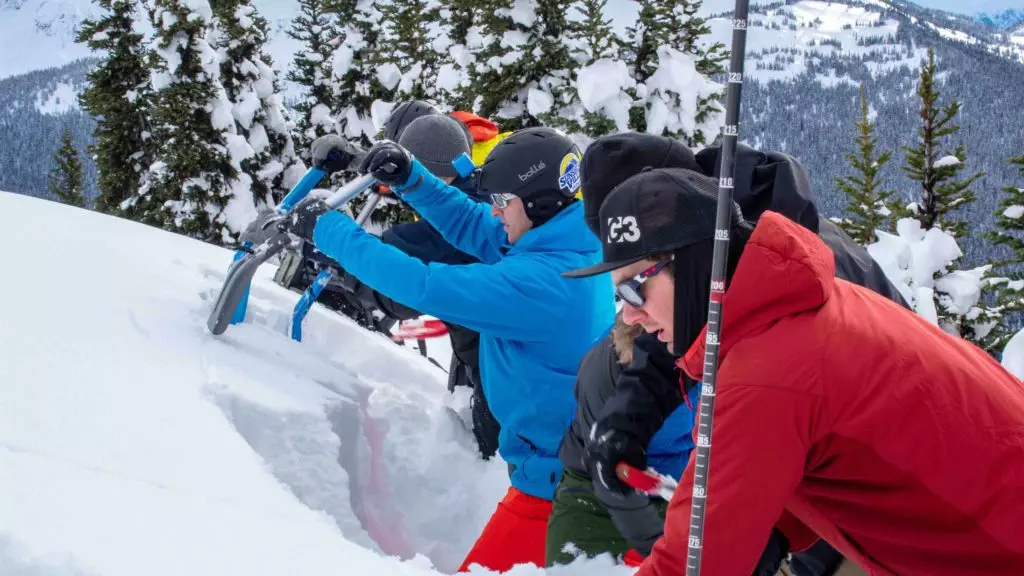Why do so many people with avalanche training end up triggering slides more than a few times in their backcountry careers? It’s one of the most perplexing conundrums of avalanche safety, one that boils down to psychology rather than skill or knowledge. Avalanche researchers have termed this effect collectively as “human factors.”

What exactly are human factors?
The human factor can be largely attributed to heuristics — the process of gaining knowledge through intelligent guesswork, using previous experiences. Heuristics are a sort of mental shortcut. An example is pulling up to a set of traffic lights in your neighborhood. You’ve gone through these lights a thousand times, so you start to anticipate the sequence and when you expect the light to go green. Now if the traffic authority was to one day change that light sequence suddenly, you may find yourself running a red light because you’ve shortcutted the decision process down to when you normally expect the light to turn green. Falling into this potentially life-threatening situation is known as an heuristic trap.

How do human factors and heuristic traps apply to avalanche safety?
Utah-based avalanche researcher Ian McCammon has published several articles on the subject of heuristic traps in avalanche terrain, which he summarizes as Familiarity, Acceptance, Consistency, Expert Halo, Tracks/Scarcity and Social Facilitation (FACETS). Running a mental checklist through the following points can make you aware of your vulnerability to a decision influenced by human factors.
Familiarity – There is a trend among parties to make riskier decisions in familiar terrain than when traveling in unfamiliar terrain. This especially affects parties with high levels of experience and training.
Example: The party returns to a spot they’ve skied several times before, maybe even that season. The trap of “I always ski this” or “people ski this all the time” can cloud other stability issues that may have been brought by abnormal temperature or wind.
Acceptance – This can affect party members who take risks while seeking the respect of their peers. Parties with a mix of men and women tend to make riskier decisions than all-male or all-female parties.
Example: A party member may be looking to impress another party member of the opposite sex, so will have more reluctance to turn back from the objective even if there are other warning signs of instability.
Consistency – Parties that are highly committed to a goal will make riskier decisions – despite deteriorating conditions and weather – in order to obtain that goal. This is amplified in large groups where the pressure to obtain the goal is amplified.
Example: One or more members of the group has been planning to ski a certain couloir or face for the last two years and now has the opportunity in sunny weather. Will they be as likely to make a safe decision under those circumstances?
Expert Halo – The leader of a party may have been elected because of their age or skiing ability instead of their education and experience. Novice party members are more likely to follow their leader into dangerous situations than when novice groups make their decisions by consensus.
Example: People new to an area will default their decisions to those in the party who are more familiar with the terrain. A fatal mistake made by the group leader could often be avoided if their decision was questioned. If you get a bad feeling, try asking: “what are the reasons we’re choosing to ski this?”

Tracks/Scarcity – Parties will sometimes feel pressure to get out and ski the best slopes quickly because they are competing with other groups in the backcountry. This is prevalent in the increasingly popular and accessible Spearhead Range.
Example: Seeing other people getting after it ahead of you on the skin track can lead to rushed decisions. In the Spearhead Range in Whistler, popular runs like Decker Main Chute or Pattison NW face will often have several groups competing to ski it first.
Social Facilitation – This heuristic is the reason why the best bump runs form under chairlifts. People consciously ski better when they know others are watching. In the backcountry, it may cause the party to ski a line outside the group’s comfort zone in order to show off to other groups in the area.
Example: People love watching others skiers and riders send it, but that should not influence your decision on what you can ski safely and well.

How can I mitigate human factors in my own backcountry trips?
There is no easy answer to this question. One way is to give each decision a moment of “sober second thought.” Ask yourself (or your party) if anything else is driving the decision, besides the facts. Is someone displaying over-enthusiasm at wanting to ski a risky line and is that enthusiasm affecting the group decision?
Another method is to limit group size. Groups of four or more tend to get caught in more heuristic traps than groups of two or three. When planning your trip, try to avoid two or more groups merging into one large party.
Lastly, make the investment of time and money and get educated. Human factors are very much a part of the AST1 and AST2 curriculums, so ask the instructor to explain examples or anecdotes from their own experiences.
Interested in taking an avalanche course this winter? Use promo code MSAAsave10 and save 10% on AST1 courses booked before November 15.
Written by: Vince Shuley

